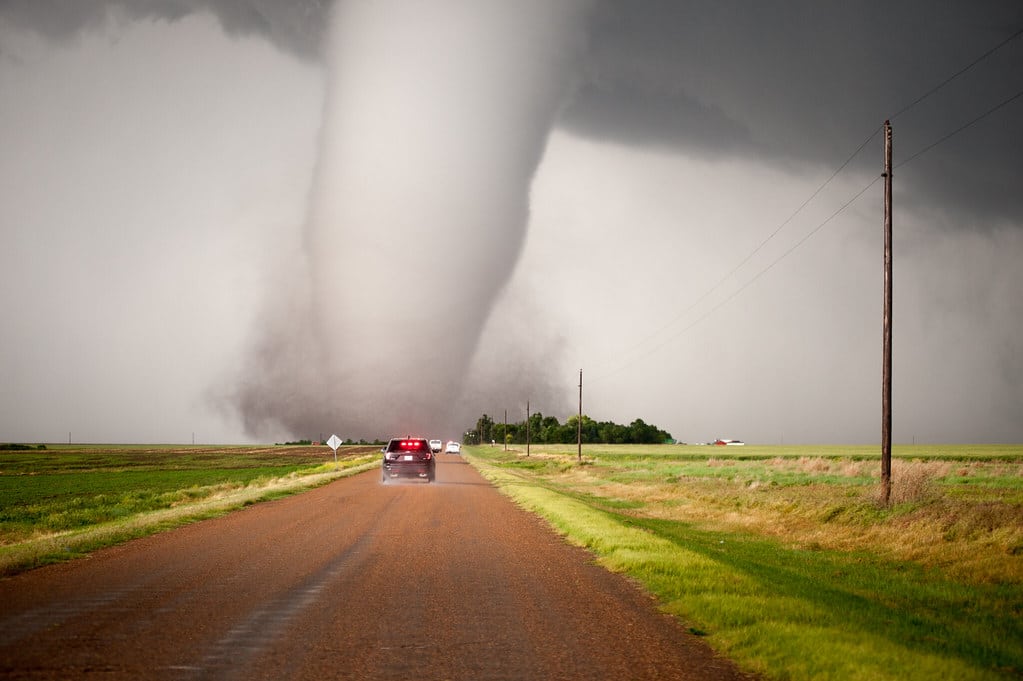Since March, the United States has seen quite a lot of tornadoes and severe spring weather. In fact, from May 13 through May 20 there were 483 tornadoes according to the National Weather Service’s Storm Prediction Center. We are accustomed to hearing about tornadic activity throughout Texas, Oklahoma, Kansas, North Dakota, South Dakota, Illinois, Iowa, Missouri, Colorado, and Minnesota – appropriately given the nickname of Tornado Alley. However, many of the tornadoes which occurred in May were accounted for in Pennsylvania, New Jersey, and Maryland. In these Northeastern areas, tornadoes have been more prevalent in the past couple of years and are only continuing to increase.
A tornado outbreak, like the ones that just occurred in May, is defined as the occurrence of several tornadoes over a region, usually due to thunderstorms embedded in the same weather system. Tornado outbreaks are defined by the number of tornadoes recorded – regardless of their size and strength – over a given time period and within a specific area. The destruction of this most recent outbreak was devastating. Several people have been killed and hundreds injured because of these tornadoes. Towns, businesses, and homes have been completely torn apart and ripped at their seams.
With tornado season continuing until July, it poses the question of what more can be done to alert your people of a tornado? The National Weather Service (NWS) states that the average lead time for a tornado warning is thirteen minutes. This is thirteen minutes from the time a potential or spotted tornado is identified until you receive the alert to your mobile phone through the Wireless Emergency Alert (WEA) or other distributors of NWS alerts, advisories, and warnings.
Although tornado warnings are important and helpful, they only allow an average of a thirteen-minute window for your people to get to safety. In cases of a distribution center with multiple buildings or a university where students are walking to and from class, those few minutes might not be enough to get your people to a safe and secure location. As an organization, you need to stay on top of the weather and be proactive about the information shared with your population.
It’s imperative – for the safety of your organization and your people – to integrate as many NWS or third party weather alerts into your organization’s emergency notification system. Doing this allows you to receive more advanced warnings of severe weather that can impact operations and safety and can precede a WEA issued NWS Tornado Warning.
Integrating your emergency notification system directly with a commercial weather provider from America’s Weather Industry can help you keep your people safe and out of harm’s way before the weather worsens by keeping you informed well before the NWS issues a Tornado Warning. Advanced warning can be a reality by setting up alerts for wind speed and direction thresholds, the detection or prediction of lightning, dangerous thunderstorms, heat index thresholds, and rain rate thresholds. Integrating these type of alerts in your emergency notification system gives you the chance to inform your people – on and off the property – of impending bad weather to give them an increased chance of getting to a safe structure. Recognize that WEA is a wonderful system for the most extreme weather warnings, yet an organization cannot solely rely on extreme weather warnings issued by authorized government alerting authorities via WEA.
You must use every single method of communication possible to make sure everyone has the most amount of advanced warning to get to safety. Using Triggers in your emergency notification system provides you the opportunity to promote NWS or commercial weather provider alerts immediately. In short, as soon as any weather alert is issued or initiated, your emergency notification system can then automatically launch the distribution of alerts – sent as a text message, a recorded phone call, an emergency alert app push notification, and a feed sent throughout buildings on digital signage. With this, you can be sure that your people are receiving all of the appropriate alerts well in advance and are not just waiting for a tornado to touch the ground before they are alerted through WEA.
Using multiple avenues of communication allows you to alert your people faster and through ways they’ll comprehend. Utilizing your emergency notification system to enhance the spread of Tornado Warnings, and all associated and predictive severe weather alerts, is a simple way to enhance crisis communications throughout your organization.
Read this White Paper to learn the benefits and limitations of WEA and how you can provide reliable, more robust, and fast alerts to the people under your care.



